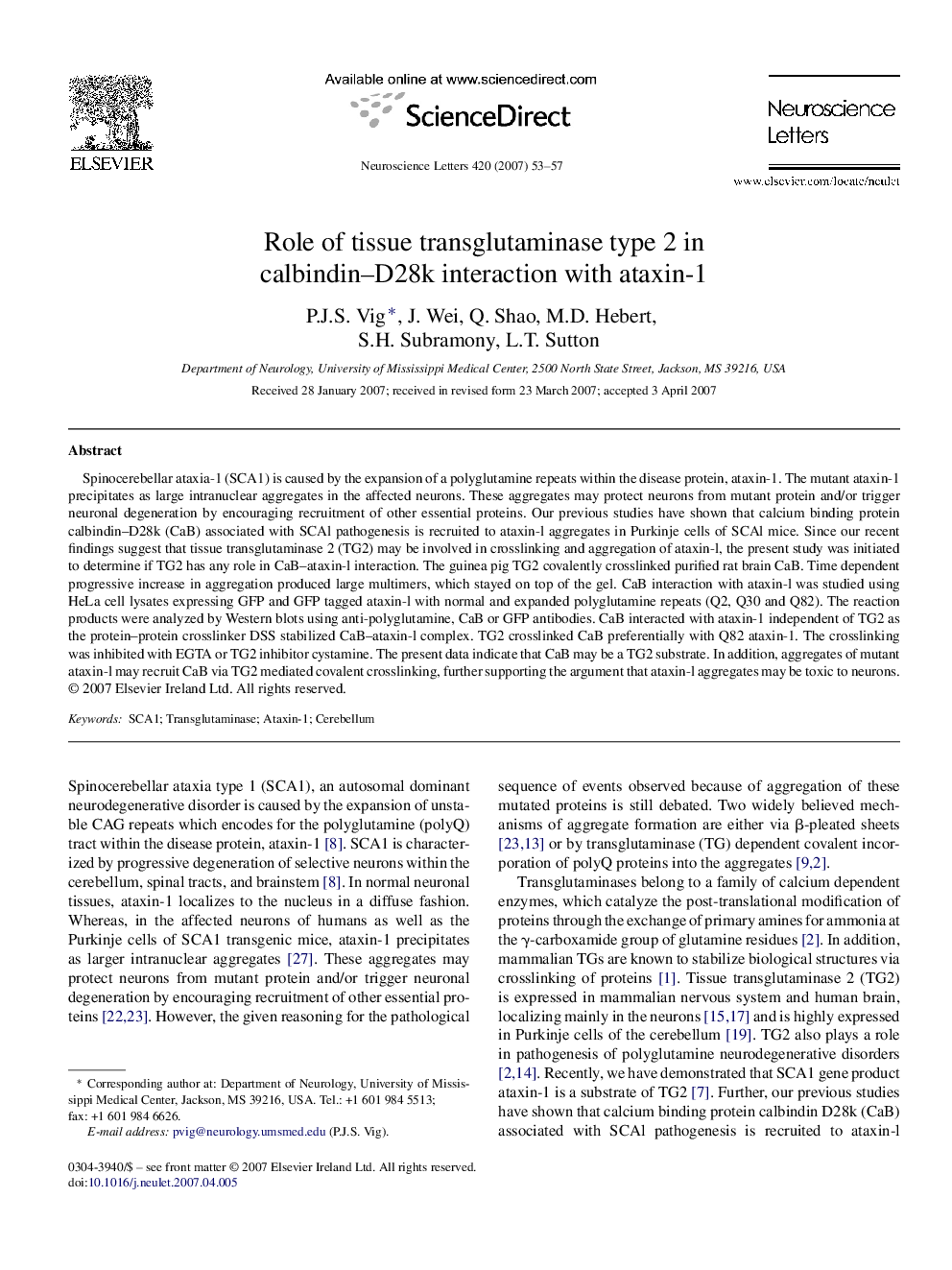| Article ID | Journal | Published Year | Pages | File Type |
|---|---|---|---|---|
| 4349505 | Neuroscience Letters | 2007 | 5 Pages |
Abstract
Spinocerebellar ataxia-1 (SCA1) is caused by the expansion of a polyglutamine repeats within the disease protein, ataxin-1. The mutant ataxin-1 precipitates as large intranuclear aggregates in the affected neurons. These aggregates may protect neurons from mutant protein and/or trigger neuronal degeneration by encouraging recruitment of other essential proteins. Our previous studies have shown that calcium binding protein calbindin-D28k (CaB) associated with SCAl pathogenesis is recruited to ataxin-l aggregates in Purkinje cells of SCAl mice. Since our recent findings suggest that tissue transglutaminase 2 (TG2) may be involved in crosslinking and aggregation of ataxin-l, the present study was initiated to determine if TG2 has any role in CaB-ataxin-l interaction. The guinea pig TG2 covalently crosslinked purified rat brain CaB. Time dependent progressive increase in aggregation produced large multimers, which stayed on top of the gel. CaB interaction with ataxin-l was studied using HeLa cell lysates expressing GFP and GFP tagged ataxin-l with normal and expanded polyglutamine repeats (Q2, Q30 and Q82). The reaction products were analyzed by Western blots using anti-polyglutamine, CaB or GFP antibodies. CaB interacted with ataxin-1 independent of TG2 as the protein-protein crosslinker DSS stabilized CaB-ataxin-l complex. TG2 crosslinked CaB preferentially with Q82 ataxin-1. The crosslinking was inhibited with EGTA or TG2 inhibitor cystamine. The present data indicate that CaB may be a TG2 substrate. In addition, aggregates of mutant ataxin-l may recruit CaB via TG2 mediated covalent crosslinking, further supporting the argument that ataxin-l aggregates may be toxic to neurons.
Related Topics
Life Sciences
Neuroscience
Neuroscience (General)
Authors
P.J.S. Vig, J. Wei, Q. Shao, M.D. Hebert, S.H. Subramony, L.T. Sutton,
